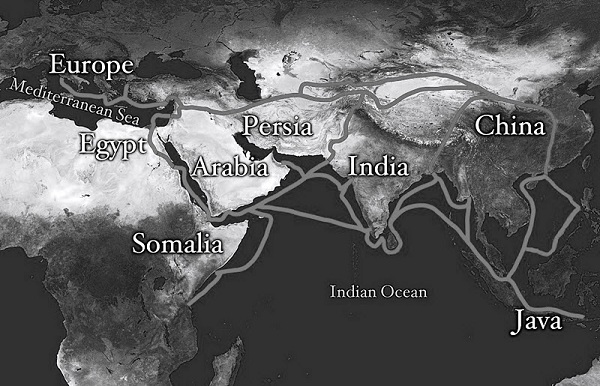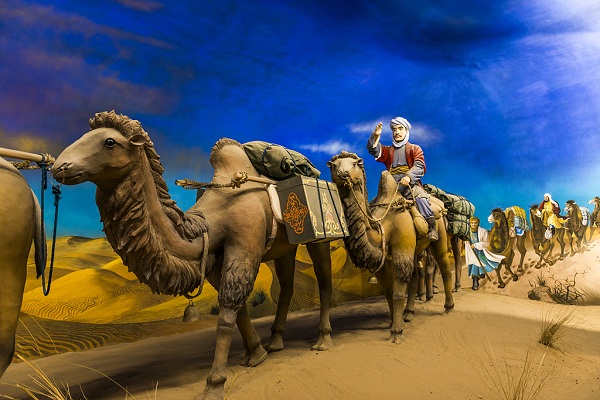Silk Road
The Silk Road was a historically important international trade route between China and the Mediterranean, connecting the East and the West in ancient and medieval times. Because Chinese silk comprised a large proportion of the trade along this ancient road, in 1877 it was named the Silk Road by Ferdinand von Richthofen, an eminent German geographer.
The Silk Road involved three continents: Europe, Africa and Asia.

Main routes of the Silk Road [Photo/silk-road.com]
The route began at Chang'an (now Xi'an), then through the Hexi Corridor it reaches Dunhuang, where it was divided into three: the southern, central and northern routes. The three routes spread all over the Xinjiang Uygur autonomous region, and then extended as far as Pakistan, India and Rome.
From the time Zhang Qian pioneered the world-famous Silk Road during the Han Dynasty (206 BC-AD 220) until the collapse of the Yuan Dynasty (1271-1368), the road enjoyed a history of about 1,600 years.

Merchants in the past specialize in transporting goods through the Silk Road. [Photo/VCG]
The road was not only an ancient international trade route, but also a splendid cultural bridge linking the cultures of China, Central Asia, India, Persia, Arabia, Turkey, Greece and Italy. The Four Great Inventions of China and the religions of the West were introduced to their counterparts along the Silk Road.
The scenery and sights along the Silk Road are spectacular and intriguing. There are the well-known Mogao Caves (Mogao Grottoes) in Dunhuang, the bustling Sunday Bazaar in Kashgar and the exotic customs in Xinjiang Uygur autonomous region.
It is now included on UNESCO's World Heritage List. There are many historic sites along the road, with some of them in China's Shaanxi, Henan and Gansu provinces and Xinjiang Uygur autonomous region.
